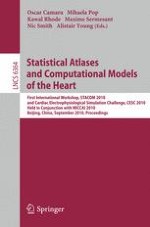2010 | Buch
Statistical Atlases and Computational Models of the Heart
First International Workshop, STACOM 2010, and Cardiac Electrophysiological Simulation Challenge, CESC 2010, Held in Conjunction with MICCAI 2010, Beijing, China, September 20, 2010. Proceedings
herausgegeben von: Oscar Camara, Mihaela Pop, Kawal Rhode, Maxime Sermesant, Nic Smith, Alistair Young
Verlag: Springer Berlin Heidelberg
Buchreihe : Lecture Notes in Computer Science
